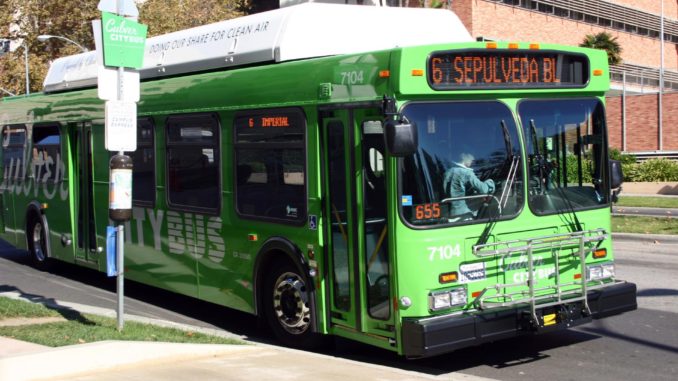
With the finalization of Culver City’s Budget for the Fiscal Year 2019-2020 approaching, all City departments presented their proposed budgets, at a series of meetings in mid-May.
The Culver City Transportation Department had some major shift, losing long-time Director Art Ida, paring down dollars, looking towards electric buses, and proposing to increase outreach to the community.
Art Ida, Transportation Director, presented his department’s proposal for the last time in his career, soon to leave his current position. Before leaving, however, Ida explained the many plans for the upcoming fiscal year. Culver City’s Department of Transportation has organized their plans into different goals, including fleet electrification, starting with buses. The total financial proposal amounts to $42,987,484, which is down $11,249,303 from last year. The majority is allocated toward a general “transportation fund” ($31,966,494), with a little over ten million designated for equipment replacement and maintenance and the residual filling the Paratransit Fund and Grants Operating Fund.
The first goal is to “Increase civic engagement.” In order to do so, they intend to modernize community outreach, and have included Nextdoor, Facebook, and Twitter to the list of social media platforms on which they are active. Additionally, the department intends on becoming more accessible to the youth with a CCUSD/ City Youth Shared Resource Page on the Culver City website and encourage the use of the Community Calendar.
Their second goal is to “Improve Transportation Circulation and Reduce Traffic Congestion” by including Culver City’s goal of no average daily traffic growth in the Transportation Demand Management (TMD) Program as well as hire a consultant to increase local business support and develop a strong TDM program. Culver CityBus currently arranges free-fare days so that Culver City Residents – or those traveling within it – have an opportunity to consider the use of public transportation.
Culver City has also implemented a scooter-share pilot program that is intended to ascertain whether that option will limit the use of vehicles at the beginning of a trip and the end (known as the first-last mile). They are also looking into collaboration with the Southern California Association of Governments in relation to the Mobility Element of the General Plan, as well as including City Council’s Traffic and Parking Subcommittee in future plans.
The next goal is to “Promote Workforce Diversity and Development,” done through outreach directed towards youth, minorities, women, veterans, and people with disabilities. Social media will be used as a means to advertise existing city programs towards high schoolers and collaboration with West LA College in both transit to and from the college and job opportunities for students.
A practical goal, to “Identify New Revenue Sources to Maintain Financial Stability” includes the continued pursuit of grants with the intent of leveraging Culver City funding, maintaining the support of legislation that increases city revenue, and working with the Culver City Chamber of Commerce.
The goal with the most steps involved is to “Enhance Culver City’s Reputation as a City of Kindness.” This will be accomplished in part through articles and posts on social media, teaching children about transportation etiquette and kindness, expanding the Public Relations program. Other plans include special college and business fares for college students, complete infrastructure improvements, and the implementation of the SmartBus program, which will Culver CityBus SmartBus Project, which will include the Real-Time Bus Arrival Information System.
Doratea Crunk


Be the first to comment